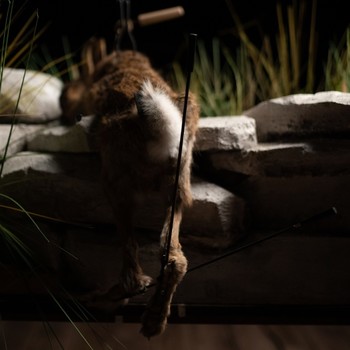A Puppet Between Life and Death
Presentation and demonstration
Schedule
Speaker Ajda Rooss
Puppetry is more than 3,000-year-old form of theatre that brings inanimate objects to life to show a story. In traditional puppetry, these objects – puppets – are often in human or animal form. Puppeteers use movements from hands and arms to control devices such as rods or strings to move the body, head, limbs, and in some cases the mouth and eyes of the puppet. The puppeteer sometimes speaks in the voice of the character of the puppet.
Diverse and varied puppetry art from its origin onwards have been used for the purpose of entertainment through performance, as sacred objects in rituals, as symbolic effigies in celebrations, and as a catalyst for social and psychological change in transformative arts. Modern puppetry extends the definition of puppet beyond the boundaries of traditional forms, as they also animate space, sound, light, material. The puppet adjusts to modern materials, media, and their fusion, mixing with
other performing genres. In such variety, however, its essence is unchanged – at its core remains the revival of the inanimate, the creation of a puppet illusion that combines the naturalistic and the abstract, the dead and the living.
The nature-preserving and philosophical performance Still-Life manifests the idea of revival in a potentiated size. Animation creates the illusion of life by grossly interfering with real life – an animated entity (stuffed exhibit) once lived, then died under a human hand. The performance considers how to fight against the appropriation of nature, against the use of animals as a means of satisfying human desires and fascinations. How to preserve life?

